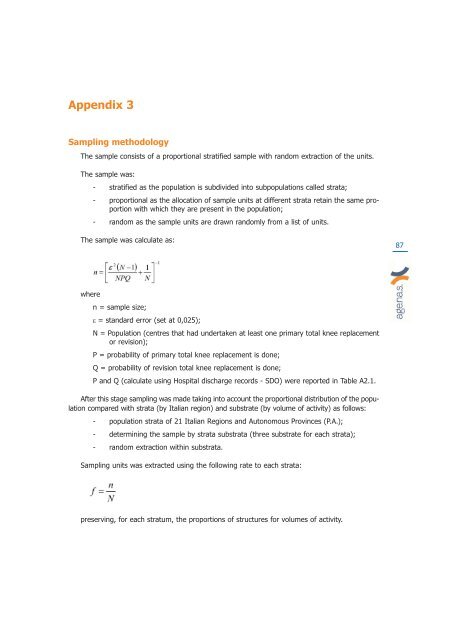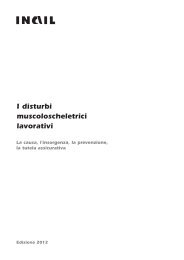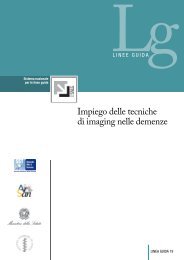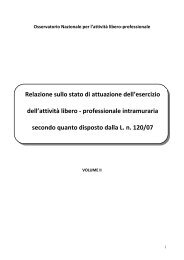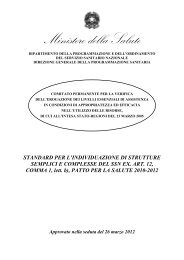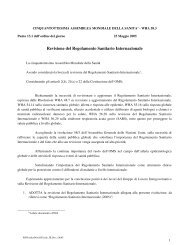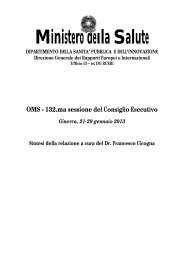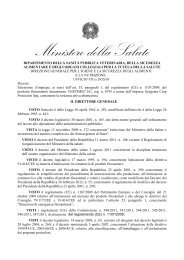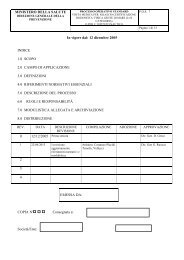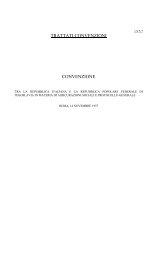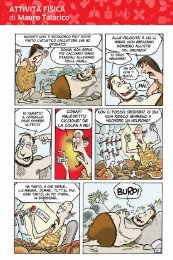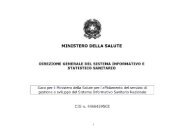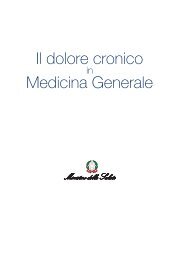hta_ knee intro.qxp - Ministero della Salute
hta_ knee intro.qxp - Ministero della Salute
hta_ knee intro.qxp - Ministero della Salute
Create successful ePaper yourself
Turn your PDF publications into a flip-book with our unique Google optimized e-Paper software.
Appendix 3<br />
Sampling methodology<br />
The sample consists of a proportional stratified sample with random extraction of the units.<br />
The sample was:<br />
- stratified as the population is subdivided into subpopulations called strata;<br />
- proportional as the allocation of sample units at different strata retain the same proportion<br />
with which they are present in the population;<br />
- random as the sample units are drawn randomly from a list of units.<br />
The sample was calculate as:<br />
where<br />
n = sample size;<br />
ε = standard error (set at 0,025);<br />
N = Population (centres that had undertaken at least one primary total <strong>knee</strong> replacement<br />
or revision);<br />
P = probability of primary total <strong>knee</strong> replacement is done;<br />
Q = probability of revision total <strong>knee</strong> replacement is done;<br />
P and Q (calculate using Hospital discharge records - SDO) were reported in Table A2.1.<br />
After this stage sampling was made taking into account the proportional distribution of the population<br />
compared with strata (by Italian region) and substrate (by volume of activity) as follows:<br />
- population strata of 21 Italian Regions and Autonomous Provinces (P.A.);<br />
- determining the sample by strata substrata (three substrate for each strata);<br />
- random extraction within substrata.<br />
Sampling units was extracted using the following rate to each strata:<br />
preserving, for each stratum, the proportions of structures for volumes of activity.<br />
87


